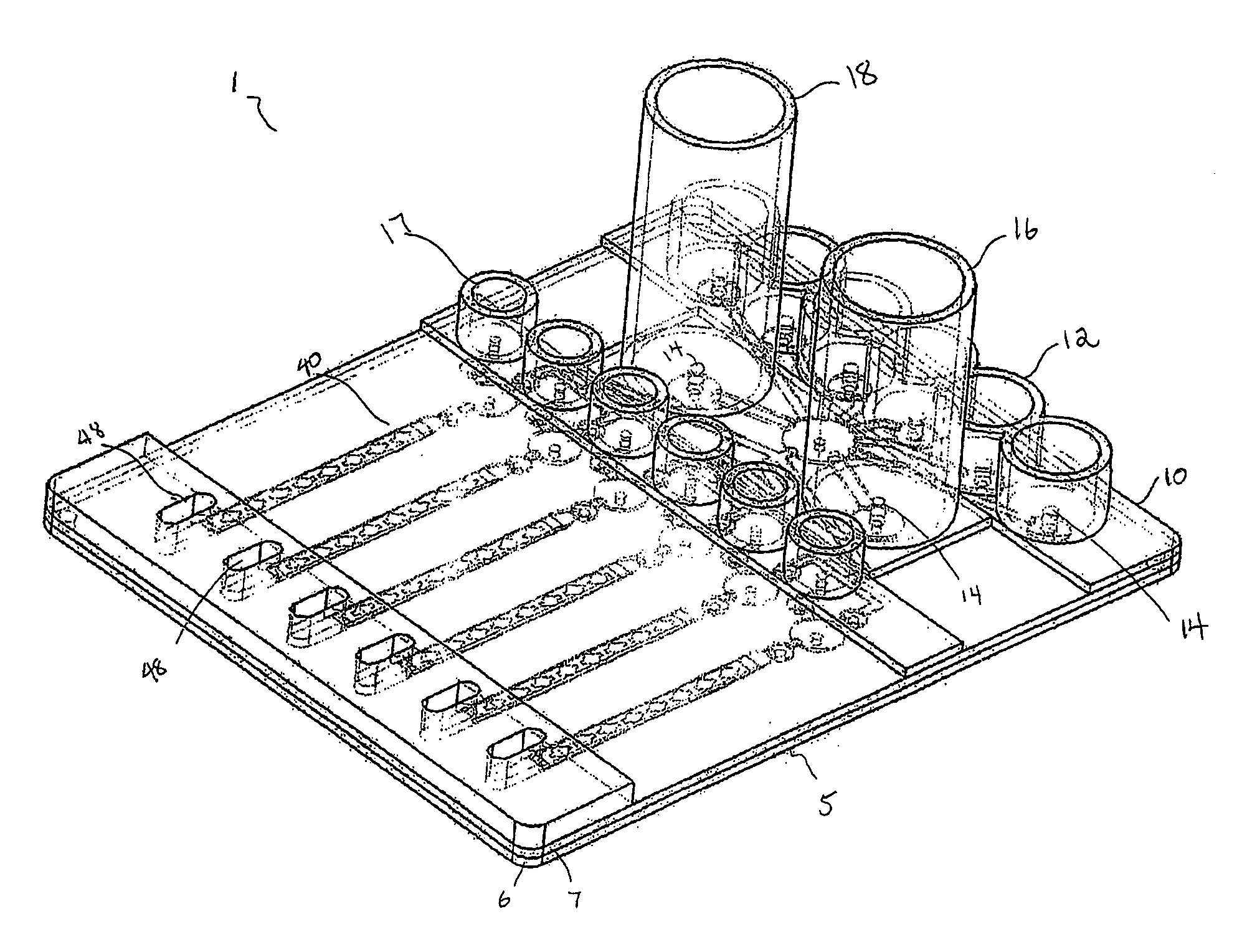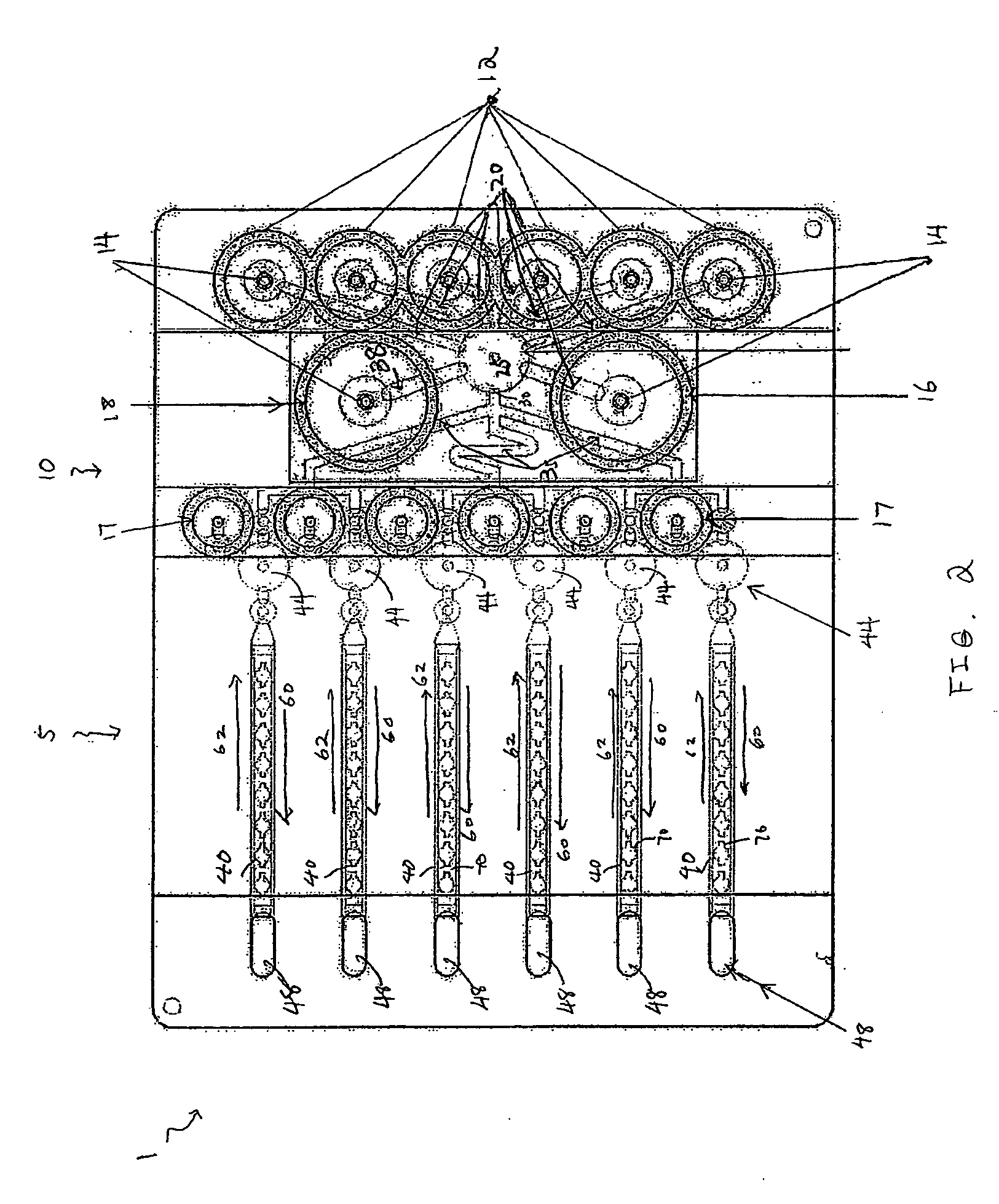Microfluidic chips and assay systems
a technology of microfluidic chips and assay systems, applied in the field of microfluidics, can solve the problems of limiting the practicality with which the system can be utilized in various chemical or biological assays, affecting the efficiency of assays, and requiring repetitive manipulation in the world of assays, etc., and achieves the effects of convenient and rapid reconfiguration, avoiding the need for a second machine, and being convenient to opera
- Summary
- Abstract
- Description
- Claims
- Application Information
AI Technical Summary
Benefits of technology
Problems solved by technology
Method used
Image
Examples
Embodiment Construction
[0049]The invention, in various embodiments, provides microfluidic chips, systems and methods. The following detailed description refers to the accompanying drawings. The following detailed description does not limit the invention. Instead, the scope of the invention is at least the scope defined by the appended claims and equivalents.
[0050]FIG. 1 illustrates a microfluidic system 1 that includes an assay chip 5 and a cartridge 10 disposed on the chip 5 along a width of the chip 5. The cartridge 10 includes a plurality of reagent reservoirs 12 having side walls that define chambers to hold fluid reagents. The chip 5 includes a buffer reservoir 16 having a cylindrical sidewall to hold a washing buffer, a plurality of shuttle reservoirs 17 adapted to hold reagents during an assay operation, and a waste reservoir 18 adapted to hold used reagents and used buffer after the assay operation. The chip 5 also includes a plurality of inlet valves 14 positioned to align with the various reserv...
PUM
 Login to View More
Login to View More Abstract
Description
Claims
Application Information
 Login to View More
Login to View More - R&D
- Intellectual Property
- Life Sciences
- Materials
- Tech Scout
- Unparalleled Data Quality
- Higher Quality Content
- 60% Fewer Hallucinations
Browse by: Latest US Patents, China's latest patents, Technical Efficacy Thesaurus, Application Domain, Technology Topic, Popular Technical Reports.
© 2025 PatSnap. All rights reserved.Legal|Privacy policy|Modern Slavery Act Transparency Statement|Sitemap|About US| Contact US: help@patsnap.com



